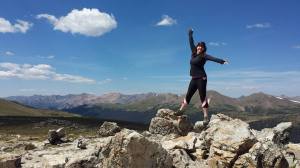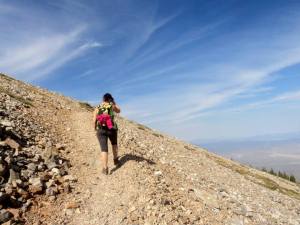Are you fortunate enough to live near the mountains?
GOOD. You are going to need the altitude.
I’ll get right to the point. The BEST way to combat altitude sickness is acclimatization. No matter what the elevation of your nearest peaks are, taking advantage of high elevation before embarking on an expedition can be crucial to avoiding Acute Mountain Sickness during your trip. If you are within a short drive distance from anything at least 2-3,000 vertical feet from where you live, pay attention, this is for you! The goal in training is to get as high as you can for as long as you can to get a head start on acclimatizing for your climb.
STEP 1: Hang Out.
I would like to hope and think that if you are planning an expedition, or even a simple trek to Everest Base Camp, that you have SOME experience hiking at elevation. This step may be obsolete. But if it’s been a while, or you have been living at sea level, simply drive up the canyon and get higher. DO NOT go higher than 8,000 feet above where you live when you first start. (this means if your town is at 2,000 feet above sea level, don’t go above 10,000 feet). Ascending too fast can be dangerous if your body is not used to the altitude. Take your time. slowly increase the altitude, drink LOTS of water, and enjoy the view.
STEP 2: Work Out.
After taking a few trips up into the mountains, it is time to start working out at higher elevations. Altitude Sickness can start as low as 8,000 feet above sea level. If you live in a low sea level state like California, I do not recommend a trip to the High Sierras as your first hike. Start lower. you want to start working out no more than 3,000 feet above where you live. You can gradually increase the elevation as your body becomes more adapt to the altitude. Take gradually longer hikes and with gradually heavier packs. Again, Water is key. You dehydrate faster at high altitude as your body needs it more. Most cases of Acute Mountain Sickness actually start from dehydration.
STEP 3: Camp Out.
When you are feeling confident in your ability to hike high and feel good, it is time for a camp out! Sleep anywhere from 3-5,000 feet from where you live, but no more than 6,000 for the first night. Your body may feel adapted, but wait until it has to try to rest and sleep at that altitude. Your body uses sleep-time to heal itself. If it can’t feel like it’s getting properly rested, you won’t wake up feeling so good the next morning. If you are doing a multi-day trip, or decide to come back another weekend, you can slowly increase the sleeping altitude. try not to increase it by more than 1,000 feet per day. If you start feeling like you have a headache, light headed, nauseous, or dizzy, descend immediately.
Vertically Challenged?
Many major cities have Hyperbaric Therapy Clinics that can be beneficial to your training. Some are as cheap as $35/session. If this is simply not an option, a road trip to the nearest mountain range will do you some good, even if you can only find time for one weekend camping trip. Any elevation is better than no elevation. Regardless, the #1 key for those at at low elevations, is to maximize cardio fitness.




